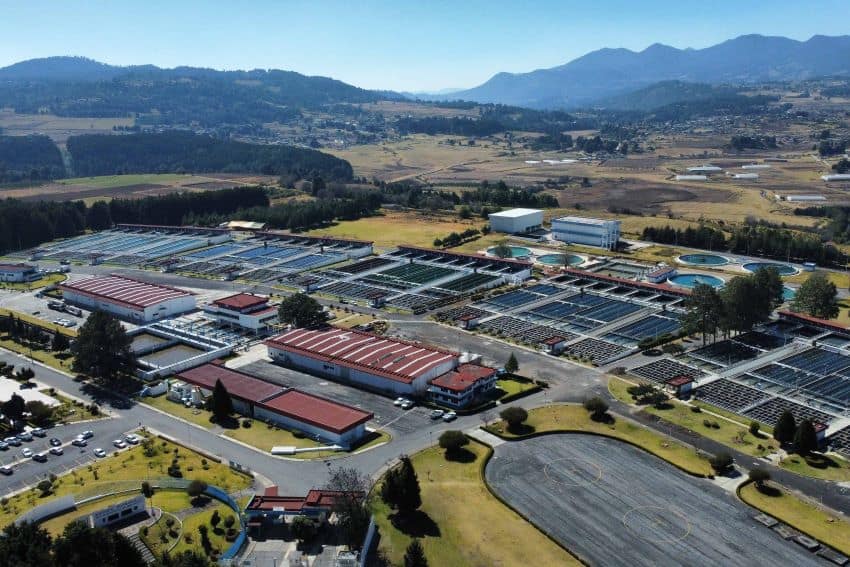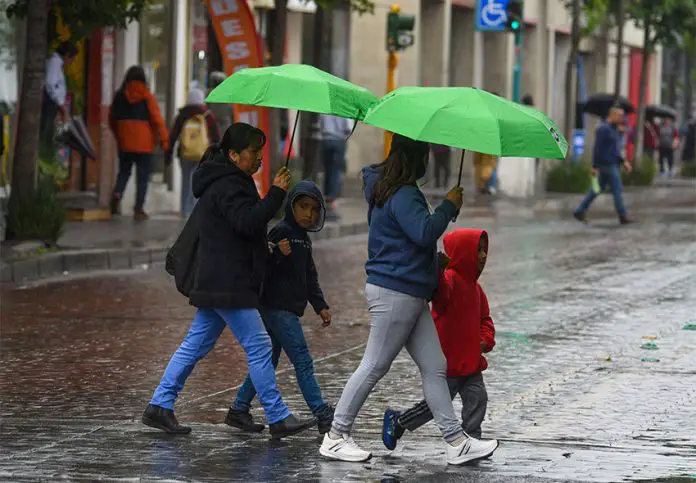Reservoir levels in the Cutzamala system, the complex inter-basin transfer that supplies Mexico City with approximately a quarter of its water, have seen an important recovery thanks to above average levels of rain in July.
After record-breaking heat waves in the spring and severe drought conditions across the country, last month saw abundant rainfall in Michoacán and México state — home to the Cutzamala system’s largest reservoirs.
According to the head of the Valley of Mexico Water Basic agency, Cutzamala system reservoirs received 191 millimeters of accumulated rainfall in July, more than July’s historical average of 181 millimeters.
These conditions led to increased infiltration and runoff in the region’s forests, rivers and streams, significantly fueling the Cutzamala system.
In the latest report by the National Water Commission (Conagua) on July 30, the Cutzamala reservoir system was at 32.4% capacity, equivalent to 253.69 million cubic meters of water. At the end of June, the reservoir system was at 26.9% capacity.
These figures are similar to those reached in July last year when the storage level was at 267.9 million cubic meters. However, it is still far below the historical average for late July: 62.2% or 486.4 million cubic meters.

To keep the taps running in Mexico City, the Cutzamala system relies on seven reservoirs, six pumping plants, 322 kilometers of canals and tunnels, and a large water treatment plant. The system’s three main reservoirs are Villa Victoria and Valle de Bravo in México state, and El Bosque in Michoacán.
According to Conagua’s report, the storage capacity of the El Bosque reservoir has seen the largest recovery in its levels. It increased from 30.9% on July 1 to 43.2% with 87.35 million cubic meters.
The Valle de Bravo reservoir — the system’s largest with a capacity for 394.4 million cubic meters — rose from 27% to 30.4% with 119.87 million cubic meters. In March, this dam was at its lowest level since 2016, at merely 28% full.
Finally, Villa Victoria went from 22.4% to 25% with 46.47 million cubic meters.
This positive trend is also observed in other reservoirs across Mexico. Conagua reported that of the 210 reservoirs in Mexico, 29 have surpassed 100% storage, 36 are between 75% and 100%, 49 are between 50% and 75%, and 96 are below 50%.
To facilitate the operation of the drainage system in the Valley of Mexico, Conagua is carrying out cleaning and de-silting actions in several sections of the Cutzamala system. Throughout this year, it has removed close to 27,000 tonnes of garbage and over 421,600 cubic meters of silt, for which it has urged residents to properly dispose of garbage as it hinders the drainage system’s operation and causes puddles and flooding risks.
With reports from El Sol de Toluca, Meteored and El Financiero
